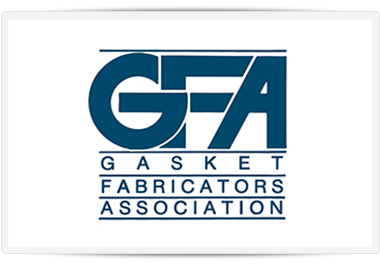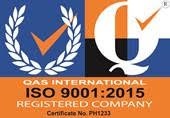Glass is one of the world's most attractive, illustrious, and desirable materials used across all industries, including fenestration. Glass is unique because it doesn't absorb anything but will allow light to penetrate it while providing physical protection and separation. Because of these unique attributes, glass is used everywhere and for virtually anything, including sneeze guards, doors, wall coverings, and much more.
With glass and other surfaces, it takes a mere five seconds for bacteria, viruses, and other contaminants to be transmitted. And the length of time bacteria and viruses can last on surfaces can vary greatly. Unfortunately, the coronavirus tends to last the longest on glass:
To make matters worse, glass is everywhere and is touched by people in an array of everyday activities. Because of this, it's imperative for homeowners and business owners to know how to confidently clean glass. Based on a Vitro Architectural Glass technical document, our experts have created a quick and easy guide to sanitize and decontaminate glass surfaces.
General Glass Sanitizing & Decontaminating Best Practices
To reduce the likelihood of spreading or catching the virus, it's imperative to regularly clean, sanitize, and decontaminate your glass surfaces. Fortunately, disinfecting glass is relatively easy and can be cleaned repeatedly without impacting the natural appearance and luster of glass.
Even though viruses degrade over time, it's best to make a conscious effort to avoid touching glass surfaces that are in shared spaces. In the event this isn't possible, it's key you avoid touching your face afterwards— until washing your hands thoroughly. In addition, make sure to communicate these best practices to others.
Uncoated glass is a relatively durable product that can be cleaned and maintained using regular cleaning practices for glass. Glass surfaces that are uncoated will easily clean with the use of non-abrasive cleaners including anti-bacterial cleaners, anti-viral cleaners, and diluted bleach.
In the majority of cases, the coated surface of the glass will be on the interior of the finished glass product, which leaves the uncoated surface exposed for cleaning. You should always refer to the manufacturer for uncoated and coated glass locations for your product. A few of the most effective cleaning solutions for sanitizing and decontaminating surfaces against the coronavirus include:
Preparing a Bleach-Based Solution for Cleaning Glass?
As we previously mentioned, a bleach-based solution can be a highly-effective way to sanitize or decontaminate surfaces. According to the Centers for Disease Control, the bleach solution can be prepared by mixing a 1/3 cup of bleach (five tablespoons) per gallon of water.
If you're preparing a smaller amount of solution, use four teaspoons per quart of water. It's important, however, you never mix bleach with ammonia or any other type of cleaner. Doing so can result in the creation of toxic fumes that can cause life-threatening complications.
For instance, if you mix bleach with an acidic solution, the chemical reaction results in the production of chlorine gas. The highly-toxic chlorine gas can cause irritation to the nose, throat, and eyes. If the chlorine gas is highly concentrated, it can result in breathing difficulties, fluid in the lungs, and even death.
How to Sanitize & Decontaminate Uncoated Glass Surfaces?
When it comes to cleaning uncoated glass, you can use the following steps to sanitize and decontaminate the surface:
- Get started by applying the alcohol solution, diluted bleach solution, diluted vinegar, or another glass cleaner by using a grit-free, clean microfiber cloth that has been saturated in the solution or by spraying the solution directly onto the glass. Ensure the entire surface area of the glass is covered. For optimum effectiveness, avoid cleaning areas greater than five square-feet at a time. As you are applying the solution, be careful to avoid damaging insulating or glazing unit seals by the over-excessive application. You should always comply with the manufacturer's suggestions on the label for handling, toxicity, and warnings for flammability. Certain cleaning solutions have the ability to damage the sealant or negatively interact with the sealant used in the manufacturing of the insulated glass.
- Once you've properly applied the cleaning solution, wipe the glass and solution in a circular motion — working to use a moderate amount of pressure.
- Immediately rinse the surface of the glass with a significant amount of clean water. Make sure to use a generous amount of water to adequately remove all cleaning solution from the surface.
- With a lint-free, clean dry cloth or a squeegee, ensure you remove all water from the glass surface. Doing so will help prevent streaks on the surface of the glass, which can create water deposits.
- Once you've completed the previous steps, you can repeat steps 1 through 4 if you see residue when looking at the glass surface in reflection.
Sanitizing and Decontaminating Coated Glass Surfaces
Glass with coatings— such as Magnetron Sputtering Vapor Deposition (MSVD) or Low-e coated glass — are more likely to be damaged due to scratches than glass surfaces that are uncoated. When cleaning coated glass surfaces, extra care must be taken to prevent damaging the coating.
At the same time, these coatings usually feature very chemically-reactive elements, which may make them more subjective to degradation or corrosion. Aggressive and abrasive chemical cleaning should be avoided.
For example, certain types of Low-e coated glass can be damaged by solutions with chlorine or byproducts that are either basic or acidic in pH. It's important to make sure you avoid accidentally getting these hazardous solutions onto the surface of coated glass.
What Solution Should Be Used for Coated Glass?
When looking to clean Low-e coated glass or any other type of coated glass, you should always check with the manufacturer. In most instances, however, an Isopropanol (IPA) or IPA/De-ionized (DI) water mix will perform well for cleaning the coated surface. However, according to the CDC, it's critical the surface is at least 70% alcohol to effectively sanitize and decontaminate coronavirus from glass surfaces.
General Sanitizing and Decontaminating Procedure for Coated Glass
As we previously mentioned, you should always refer to the manufacturer for specific cleaning procedures for coated glass. However, the general coated glass cleaning instructions are listed below:
Contact the Fenestration Experts at Frank Lowe
Whether it's a retail store with glass merchandise counters, a storefront with glass windows, or any other space with glass surfaces; it's imperative to know how to properly sanitize and decontaminate uncoated and coated glass surfaces.
Contact Frank Lowe today for your fenestration needs.






